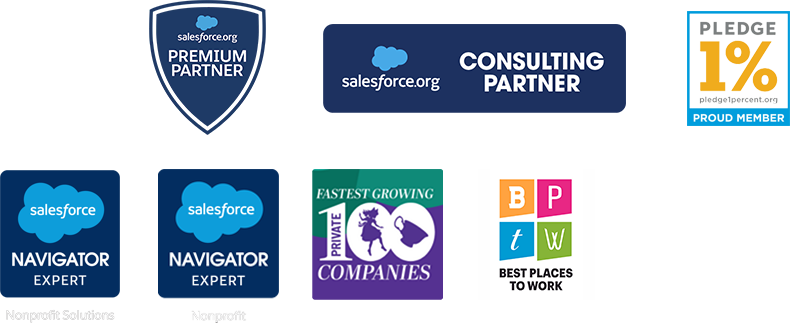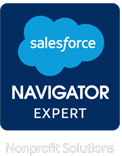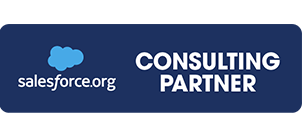How Nonprofits Can Fund Their First AI Project: A Guide
AI is changing how nonprofits operate—from automating research to uncovering insights that inform smarter decisions. But while many organizations are curious about AI, few know how to fund it. The good news: you don’t need a massive project budget to start. With a clear pilot, a simple productivity analysis, and a well-structured funding strategy, nonprofits can demonstrate value and attract the resources they need to scale.
Below, we outline a practical approach for testing and funding your first AI project, complete with real grant opportunities and a roadmap to move from idea to measurable impact.
What Is an AI Pilot?
An AI pilot is a small, low-risk project designed to test how artificial intelligence can solve a specific problem within your organization. Think of it as a first step, not a full-scale implementation. A good pilot focuses on one clear use case, such as automating a repetitive task, improving donor segmentation, or streamlining data entry.
The goal isn’t to overhaul your operations—it’s to explore what’s possible, measure real results, and build internal trust. A pilot gives your team a chance to see AI in action, evaluate its impact on efficiency and mission outcomes, and gather the data you need to make a strong case for future funding or expansion.
A simple “AI productivity analysis” any nonprofit can run
In our team’s experience working with nonprofits exploring AI, the most successful pilots start with clarity and evidence. Leaders want to know: Is this actually saving us time or money? A simple AI productivity analysis can answer that question quickly. It’s an easy way to de-risk experimentation, demonstrate value, and build the case for continued funding—all without needing a data science team.
Here’s how we guide clients through the process:
- Pick one use case (e.g., “produce a research brief from Salesforce + SharePoint + web in one place”).
- Time it “the old way.” Have a staff member do it as usual; record minutes.
- Time it with AI/your agent. Same person, same task, with the tool.
- Scale the math. Multiply time saved by weekly/monthly task volume and by fully-loaded staff costs.
- Report out. Turn savings into a budget story: “This pilot saves [a number of] hours/month = $X. We’ll redeploy those hours to direct services and expand the pilot.”
Once you’ve run a simple productivity analysis and can clearly show how AI saves time or resources, you’re ready to turn that data into momentum—and start quantifying the true return on your investment. The next step is to translate those results into a compelling funding story—one that connects your pilot’s measurable impact to the broader goals of your organization and potential grantmakers.
How to secure grant funding for AI (with live doors to knock on)
Step 1: Tie AI to mission outcomes and funder priorities
Align your proposal with the priorities of the funder you’re approaching, whether that means mapping your project to the UN Sustainable Development Goals or highlighting how it supports areas like frontline workforce development or equity.
Step 2: Start with a modest pilot budget (e.g., $20k).
Use your productivity analysis to show baseline, improvement, and scaled impact. Funders increasingly expect learning agendas and measurable value.
Step 3: Budget for people and governance, not just tools.
Point to the NIST AI Risk Management Framework (Govern, Map, Measure, Manage) to justify line items like staff training, data work, evaluation, and human-in-the-loop QA. Many funders welcome responsible AI guardrails.
Step 4: Apply to AI-friendly grant programs.
Many funders require a clear AI implementation plan to take your proposal seriously. A strong plan demonstrates not just what you’ll build, but how you’ll manage data, measure outcomes, and sustain the work responsibly. If you need support developing that documentation—or crafting a compelling case for funding—our team at Idealist Consulting can help. We stay up to date on evolving grant requirements and can provide the strategy, technical plan, and language you’ll need for submission.
Here are some current/recurring options that explicitly welcome AI work:
- OpenAI People-First AI Fund: $50M (U.S. nonprofits), unrestricted grants for education, community innovation, and economic opportunity.
- AWS IMAGINE Grant: U.S. nonprofits; categories include data/AI/ML modernization and prototyping on Amazon Web Services.
- Salesforce Accelerator - Agents for Impact: provides funding, mentorship, and technology support to nonprofits developing AI solutions for social good. Interested organizations should reach out to their Salesforce Account Executive (AE) to learn more about eligibility and the application process.
- Google.org AI for the Global Goals: supports AI tied to SDGs; review past winners to pattern-match your proposal.
- Patrick J. McGovern Foundation: significant commitments to data and AI for social impact; multiple nonprofit partners.
- Microsoft Nonprofit grants/credits (including Copilot access for eligible orgs) and AI for Accessibility innovation funding.
Bonus: Some local/corporate programs (e.g., data-center community grants, digital equity funds) can underwrite training, devices, or data work that your AI pilot depends on.
Step 5: Show readiness and responsibility in your proposal.
Signal that you’ll implement AI safely and equitably. Two credible anchors:
- NIST AI Risk Management Framework: show that you’ll govern, map, measure, and manage risks (bias, privacy, safety), as well as document your process.
- OECD AI Principles: show that you’re committing to trustworthy, human-rights-respecting AI use.
Once you’ve identified the right funding opportunities, the next step is turning those resources into action. That’s where our 90-Day AI Pilot Roadmap comes in. It’s a simple, practical framework any nonprofit can follow to design, test, and measure an AI use case from start to finish. Whether you’re exploring automation, research assistants, or data insights, this roadmap helps you move from idea to measurable impact with confidence.
Click here to download the full roadmap and get started.
Moving Toward a Responsible AI Future
AI won’t solve every problem, but it can make the nonprofit sector more efficient, informed, and connected when used with care. The key is to pilot practical use cases, quantify value, and reinvest time saved into direct impact.
As nonprofits adopt AI tools, having the right guidance is key to ensuring equity, transparency, and mission alignment stay at the center. At Idealist Consulting, our team stays on top of emerging AI trends and responsible technology practices to help organizations navigate this new landscape with confidence. Whether you’re exploring your first pilot, looking to measure impact, or seeking funding for innovation, our experts can help you design a strategy that’s ethical, effective, and built for real-world results.
Click the button below to get in touch with an Idealist to discuss the best option for your organization.















